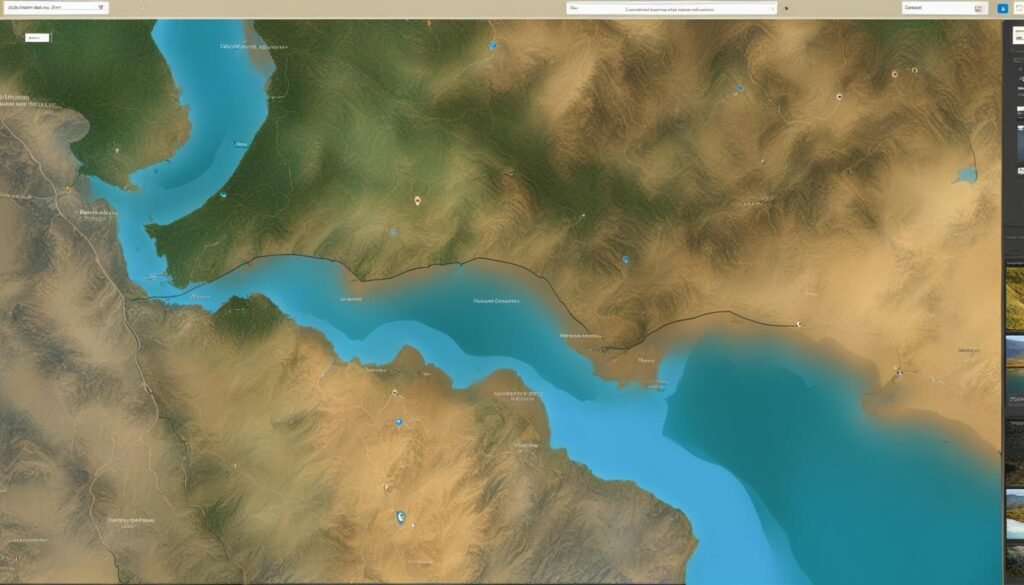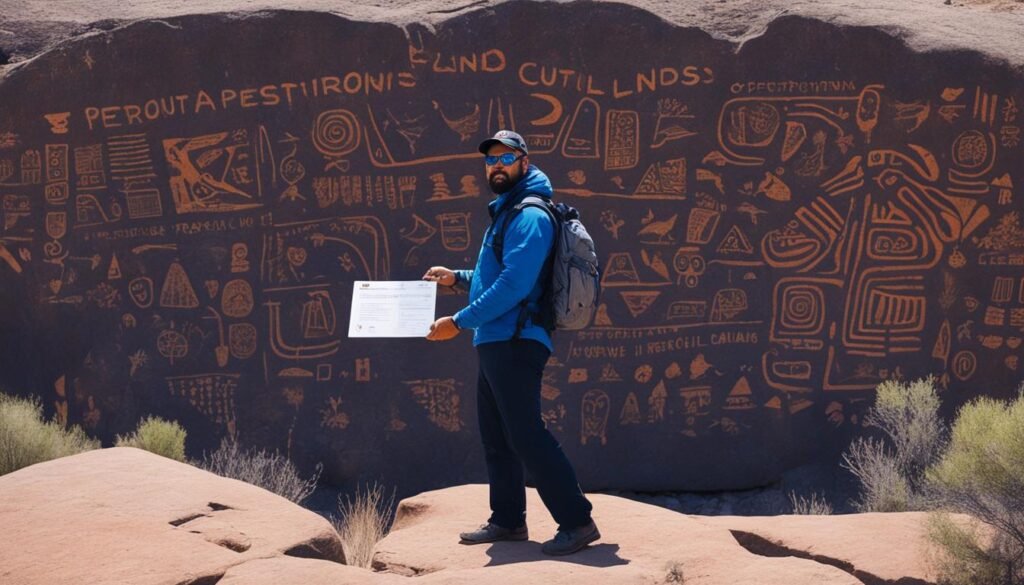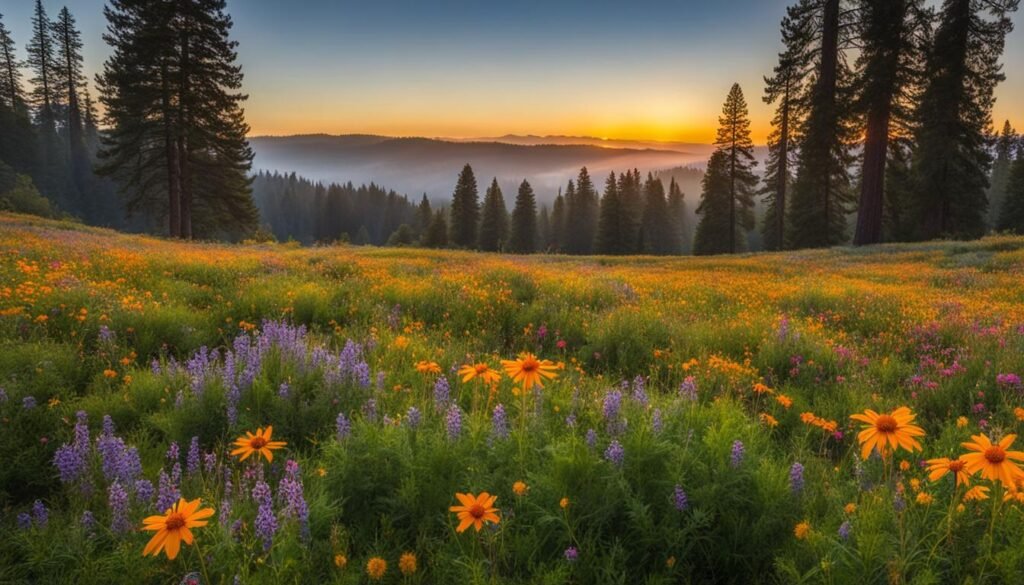With its vast and diverse landscapes, California offers a multitude of opportunities to explore and enjoy public lands. From iconic national parks to serene state reserves, California’s public lands are a treasure trove for outdoor enthusiasts. Whether you’re interested in camping, hiking, or simply immersing yourself in nature, this guide will help you navigate the beauty and adventure that await on California’s public lands.
Key Takeaways:
- California is home to a variety of public lands, including national parks and state reserves.
- Outdoor recreation activities such as camping and hiking are popular in California’s public lands.
- Preserving California’s public lands is essential for future generations to enjoy.
- State parks and national parks in California offer a range of outdoor activities and amenities.
- Exploring California’s wilderness areas provides an opportunity to connect with nature and experience solitude.
California Public Lands Recreation Map
The California Public Lands Recreation Map is a valuable resource for exploring public lands in California. This interactive map provides information on developed recreation areas, including icons indicating the type of recreational activities available at each site.
By using the search and filter functions, users can easily find specific areas of interest. Whether you’re looking for hiking trails, camping spots, or open lands for outdoor activities, this map has you covered.
In addition to the location and activity details, the map also provides access to additional resources. Recommended maps and online reservation platforms are listed for each site, making it easier to plan your outdoor adventures in California’s public lands.
The California Public Lands Recreation Map is not only user-friendly but also an excellent tool for public lands access and management. It allows individuals and organizations to have a comprehensive view of California’s public lands, aiding in informed decision-making and responsible land use.
Bureau of Land Management Maps
The Bureau of Land Management (BLM) provides a range of maps and resources to enhance your exploration of public lands in California. Whether you’re planning a hiking trip, camping adventure, or simply want to learn more about the diverse landscapes, the BLM has you covered.
The BLM’s online Map Viewer is a user-friendly tool that allows you to easily find, view, and create maps. With the ability to turn on or off layers, you can tailor your map to your specific interests. The interactive map helps you locate various public lands and discover the recreational opportunities available at each site.

The BLM California Public Room is a valuable resource that offers a wide selection of maps and brochures. These materials provide detailed information about specific regions, trails, and facilities, allowing you to plan your trip with confidence. Additionally, the BLM offers georeferenced PDF maps that can be downloaded and used offline, perfect for exploring remote areas with compatible mobile applications.
For those seeking more advanced mapping tools, the BLM Geospatial Business Platform Hub is the go-to source. Here, users have access to geospatial data sets, enabling them to create custom maps and analyze the geospatial information as needed. This feature is particularly useful for researchers, land managers, and other professionals who require in-depth geospatial data.
Immerse yourself in the captivating stories behind California’s public lands through BLM’s Story Maps. These interactive maps combine stunning visuals with narrative content, providing a unique glimpse into the history, culture, and natural wonders of various locations in California.
With the Bureau of Land Management’s diverse range of maps, brochures, georeferenced PDFs, geospatial data, and engaging Story Maps, your exploration of California’s public lands will be enriched and informed.
Responsible Use of Public Lands
When exploring public lands in California, it’s important to practice responsible use and conservation. By taking small steps to minimize our impact, we can ensure the preservation and enjoyment of these precious natural resources for years to come.
Tread Lightly
Tread Lightly is an organization dedicated to promoting responsible outdoor recreation. They offer guidelines and educational materials to help outdoor enthusiasts make environmentally conscious choices. From staying on designated trails to properly disposing of waste, following Tread Lightly’s principles helps protect California’s public lands.
Leave No Trace
Leave No Trace is another organization that focuses on outdoor ethics and preservation. Their seven principles provide a framework for outdoor activities that minimizes impact on the environment. By remembering to leave nature as we found it, we can preserve the beauty of California’s public lands for future generations.
Rockhounding
Rockhounding, the collection of minerals, rocks, and fossils, is a popular activity on public lands. It allows enthusiasts to discover and appreciate the natural treasures hidden beneath the surface. However, it’s crucial to respect collection limits and regulations, as well as follow ethical practices. This ensures the sustainable management and preservation of these unique geological resources.
Public Lands Recreation Limits and Permits
When exploring the vast public lands in California, it’s important to be aware of the limits and regulations in place to ensure their sustainable use and preservation. Different public lands may have varying limits for camping and hiking, depending on their specific management policies. It is crucial to familiarize yourself with these limits to ensure a safe and responsible outdoor experience.
If you’re planning on camping in California’s public lands, be sure to check the camping limits set by the land management authorities. These limits may include restrictions on the number of nights you can camp at a particular site or area, as well as the maximum group size allowed. Respecting these limits helps maintain the delicate balance of nature and ensures that the campsites are available for everyone to enjoy.
For hiking enthusiasts, it’s essential to be aware of any restrictions on specific trails. Some hiking trails in California’s public lands may have limitations on the number of daily visitors to preserve the natural environment and prevent overcrowding. By following these guidelines, you can make the most of your hiking adventure while minimizing your impact on the trails.
Rockhounding and mineral collecting enthusiasts should also be mindful of the limits set for these activities. Public lands in California have specific limits on the amount of rocks, minerals, and fossils that can be collected per day and per year. These limits are in place to protect the natural resources and geological features of the land. Respecting these limits ensures that future visitors can also enjoy the thrill of discovering unique specimens.
Moreover, if you’re interested in cultural resource use, such as the collection of artifacts, professional archaeologists can obtain permits that allow them to conduct excavation and collect artifacts while adhering to strict guidelines. These permits ensure that cultural resources are conserved and protected for research and educational purposes.
To fully enjoy your outdoor activities in California’s public lands, it’s crucial to obtain any necessary permits. Certain activities, such as camping in designated wilderness areas or using off-road vehicles, may require permits to ensure resource protection and visitor safety. Before embarking on your adventure, check with the appropriate land management agency to obtain any required permits and gather additional information on rules and regulations.

The Value of Permits
Permits play a vital role in the management of California’s public lands. They help land management agencies monitor and control activities to preserve the natural and cultural resources, prevent overcrowding, and ensure the safety of visitors. By obtaining the necessary permits, you contribute to the responsible and sustainable use of these precious public lands, allowing future generations to enjoy their beauty and serenity.
Contact Information and Resources
If you have any questions or need further information about exploring public lands in California, there are several resources available. The Bureau of Land Management California State Office and the California Department of Parks and Recreation can provide valuable information and assistance.
The BLM California Public Room is a great place to start your research. They offer a wide range of maps and brochures to help plan your trip, and their knowledgeable staff can answer any specific questions you may have.
Additionally, you can visit the websites of various state park agencies to access helpful resources and contact information. California’s public land offices are dedicated to preserving and managing these lands, and they can provide valuable information about specific parks and recreational areas.
California Department of Parks and Recreation
- Website: www.parks.ca.gov
- Contact: Visit the Contact Us page for specific contact details.
Bureau of Land Management California State Office
- Website: www.blm.gov/california
- Contact: Visit the Contact Information page for specific contact details.
Conclusion
California’s public lands offer an abundance of natural beauty and thrilling outdoor activities for every adventurer. From the majestic national parks to the serene state reserves, there is something here for everyone to discover and enjoy. By exploring these public lands responsibly and following conservation guidelines, we can ensure the preservation of these treasures for future generations to experience.
Whether you’re pitching a tent for a camping adventure, setting out on hiking trails, or immersing yourself in California’s outdoor recreation, the public lands in this incredible state are waiting to be explored. The diverse landscapes and breathtaking vistas provide a backdrop for unforgettable experiences and cherished memories.
As we roam these public lands, it is essential to be respectful of the environment, wildlife, and fellow outdoor enthusiasts. Embracing sustainable land management practices ensures that California’s public lands continue to thrive and provide endless opportunities for outdoor recreation. So, pack your bags, grab your map, and embark on a journey to discover the wonders of California’s public lands.
FAQ
What are some popular outdoor activities in California’s public lands?
Camping, hiking, and rockhounding are popular outdoor activities in California’s public lands.
How can I find information about public lands in California?
The California Public Lands Recreation Map and the Bureau of Land Management (BLM) Maps are valuable resources for exploring public lands in California.
What is the California Public Lands Recreation Map?
The California Public Lands Recreation Map is an interactive map that provides information on developed recreation areas in California’s public lands.
Where can I find additional resources and maps for public lands in California?
The Bureau of Land Management (BLM) California Public Room and the BLM website provide access to a wide range of maps and brochures for planning your trip.
How can I practice responsible use and conservation of public lands?
Organizations like Tread Lightly and Leave No Trace provide guidelines for minimizing your impact on the environment while enjoying outdoor activities.
Are there any limits and regulations for camping and hiking in public lands?
Camping and hiking limits may vary depending on the specific public land and its management policies. It’s important to be aware of any restrictions and obtain permits if necessary.
Are there any limits for rockhounding and mineral collecting on public lands?
Yes, there are specific limits for rockhounding and mineral collecting, including the amount that can be collected per day and per year. It’s important to adhere to these limits to ensure the preservation of natural resources.
Where can I find contact information and resources for public lands in California?
The Bureau of Land Management California State Office, the California Department of Parks and Recreation, and various state park agencies have valuable information and resources available.







